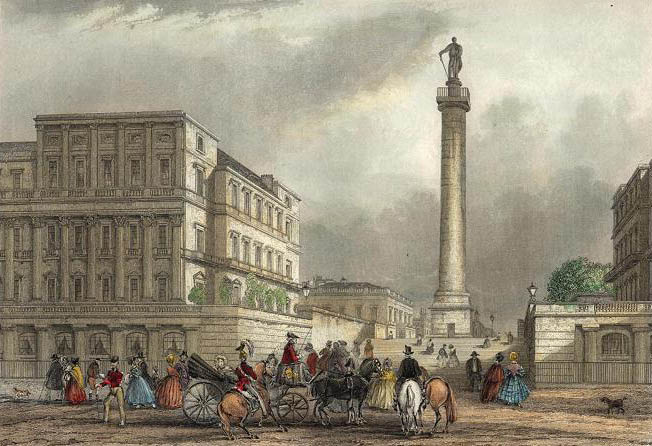
A couple of hundred metres from the much more famous Nelson’s column you will find the slightly more senior Duke of York’s Column (Nelson was unveiled in 1840, the Duke of York in 1834).
This commemorates Frederick, second son of George III, younger brother of the Prince Regent (who became George IV) and commander-in-chief of the British Army from 1795.
Frederick led the Anglo-Russian invasion of Holland in 1799 (yep, the British and their Russian allies invaded Holland who were allying with Revolutionary France in what became known as the War of the Second Coalition). Initial victories by the allies were overturned by defeats and the withdrawal of troops left the situation on land pretty much as it had been before the invasion – a fact satirised in the nursery rhyme: “The Grand Old Duke of York, he had ten thousand men, he marched them up to the top of the hill – and he marched them down again.”
This defeat, and problems in an earlier campaign in Flanders, seems to have spurred Frederick. He instituted a series of reforms of the army that helped professionalise and reorganise it, so it was a much more effective force in the subsequent Napoleonic Wars. Writing 100 years later the military historian Sir John Fortescue said that Frederick did “more for the army than any one man has done for it in the whole of its history”.
On the accession of his brother as George IV, Frederick became the heir presumptive, George’s daughter and heir Charlotte having died in childbirth in 1817. (This means that had George died first, Frederick would have succeeded him. As it was, Frederick died in 1827, and on George’s death in 1830 another brother became William IV.)
The column was financed by all ranks in the army forgoing one day’s wages (how voluntary this was remains a little obscure) and the column (by Benjamin Dean Wyatt) erected in 1832, with the statue (by Richard Westmacott) raised in 1834. Frederick was an inveterate gambler and seems to have been perpetually in debt – the joke that went the rounds was that the statue was erected on such a tall column (it’s a little over 40m high) so that Frederick could keep away from his creditors.
Like the Monument, there is a staircase within the column and a platform at statue level. But this has been closed to the public for over 120 years (Vic Keegan managed to blag his way up a couple of years ago). Perhaps spending a few quid on making this safe and accessible would have been a better way to get people back into the west end than the turf covered scaffolding at Marble Arch; the views, certainly, would have been a lot better.

